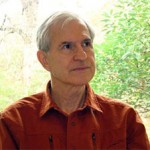Researchers are using the Trestles Supercomputer to calculate the top-down activities of the brain.
In his recent paper, Electroencephalographic Field Influence on Calcium Momentum Waves Lester Ingber explores the relationship between large-scale, or “top-down” activities in the brain and short-term memory and consciousness. As a user of the advanced digital resources within the National Science Foundation’s eXtreme Science and Engineering Discovery Environment, or XSEDE, Ingber received an allocation on the Trestles supercomputer at the San Diego Supercomputer Center (SDSC) at the University of California, San Diego, which is a member of XSEDE.Ingber has developed a model built from electrically excitable neurons and star-shaped multifunctional astrocytes, the most-abundant type of cell in the human brain. The neurons transmit electrical and chemical signals via synapses and waves of Ca2+ (calcium ions), flowing from astrocytes to neuron–neuron synapses, affect other electrical and neuromodulator (neuron-altering substance) processes. He explains the flow of influence as going from highly synchronized neuronal firings to Ca2+ waves, to astrocyte–neuron interactions, which in turn are likely, but not experimentally confirmed, to affect background ‘spontaneous’ synaptic activity that has been observed for many years to shape short-term memory.
Dr. Ingber’s work was ideally suited for Trestles in that he had developed an innovative model on lab-scale computational resources, but the computational demands of his research outgrew what was possible on his local resources,” said Glenn K. Lockwood, a user services consultant with SDSC. “We worked with him to connect his single-node, multithreaded code to an MPI-based framework that fully exploited the data parallelism inherent in his project, allowing his entire dataset to be fitted using the most sensible and efficient forms of concurrency.”
Read the Full Story.




